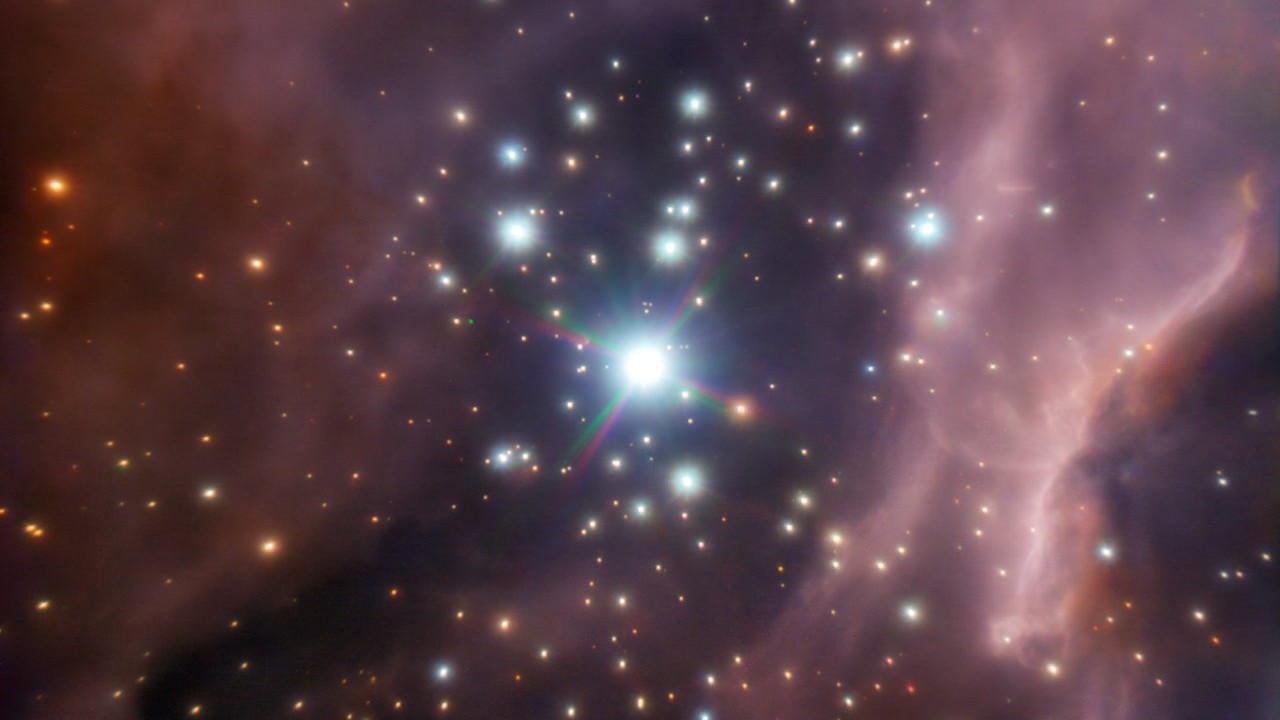Listen to a star 'twinkle' in world-first audio simulation
Scientists recreated the eerie twinkle of a star in an attempt to map the cosmic furnace's inner workings.

We all know how the lullaby goes, but now astrophysicists have finally caught up — reproducing the eerie thrumming sound of a star's "twinkle, twinkle" for the first time.
By simulating the turbulent waves of gas that travel through a star's innards toward its outer surface, scientists recreated the innate fluctuations of light produced by the cosmic furnaces. Then, by converting these waves into sound waves, the researchers offered us the best idea yet of what stars would sound like if we could hear them.
The result is a spectral, high-pitched airplane cabin whine accompanying a rapid heartbeat. The ethereal noise and the study of inner gas dynamics that created it were published July 27 in the journal Nature Astronomy.
Related: Tiny, 'ultracool' star emits surprising radio signals that it should not be capable of producing
"Motions in the cores of stars launch waves like those on the ocean," lead study author Evan Anders, an astrophysicist at Northwestern University in Evanston, Illinois, said in a statement. "When the waves arrive at the star's surface, they make it twinkle in a way that astronomers may be able to observe.
"For the first time, we have developed computer models which allow us to determine how much a star should twinkle as a result of these waves," he added. "This work allows future space telescopes to probe the central regions where stars forge the elements we depend upon to live and breathe."
How the star got its twinkle
We observe stars twinkling for two reasons. First, their distant light is bent by unpredictable air currents as it travels through Earth's atmosphere, constantly altering the amount of light that reaches us on the ground. But stars also have an inherent twinkle — one that emerges from convection processes as hot, fusing plasma travels outward from their fiery cores to their surfaces.
Sign up for the Live Science daily newsletter now
Get the world’s most fascinating discoveries delivered straight to your inbox.
"Stars get a little brighter or a little dimmer depending on various things happening dynamically inside the star," Anders said. "The twinkling that these waves cause is extremely subtle, and our eyes are not sensitive enough to see it. But powerful future telescopes may be able to detect it."
To simulate the waves inside stars, the researchers first had to contend with a significant issue: While the flows that generate waves inside stars last weeks, the waves themselves can either emerge at the stars' surfaces or bounce around inside them for hundreds of thousands of years. Isolating the waves from their reflections was the team's first challenge.

"We first put a damping layer around the star — like the padded walls you would have in a recording studio — so we could measure exactly how the core convection makes waves," Anders said.
After applying this "filter" to their stars and finding that it accurately described the waves inside, the scientists added a further filter that simulated the stars' acoustic properties, enabling them to recreate both the convective currents and their reverberations.
As a further test, they applied their method using sound waves from real music — including "Jupiter" from Gustav Holst's orchestral suite "The Planets," and "Twinkle, Twinkle, Little Star" itself — to see how the songs would sound coming from the hearts of stars.
Returning to the convective currents of stars and pitching them up so they were audible to human hearing, the astrophysicists produced different soundscapes depending on the stars' sizes.
Reverberating waves from large stars (40 times the size of the sun), made sounds similar to echoing zaps from ray guns, whereas waves from medium stars (equivalent to 15 solar masses) and small stars (three solar masses) sounded like faint humming and distant sirens, respectively.
The scientists said studying the waves inside stars could one day enable a better understanding of the internal dynamics that power stars, as well as help astronomers to make a first-of-a-kind telescopic detection of stars' elusive innate twinkle.

Ben Turner is a U.K. based staff writer at Live Science. He covers physics and astronomy, among other topics like tech and climate change. He graduated from University College London with a degree in particle physics before training as a journalist. When he's not writing, Ben enjoys reading literature, playing the guitar and embarrassing himself with chess.









